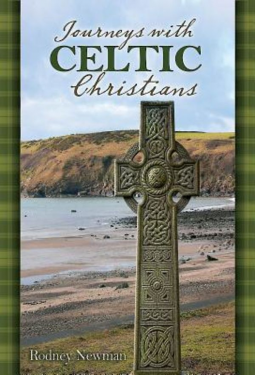
BOOK REVIEW- Journeys with Celtic Christians Participant- “The early Christians of Ireland developed an expression of the faith characterized by deep devotion and fascinating stories,” Newman said. Writers often use the metaphor of journey or pilgrimage to describe the Christian life. What distinguishes this book and its development of that theme is its invitation to readers to experience their personal faith journeys through Celtic lenses. Pilgrimage is part of the DNA of Celtic Christians. The faith spread and flourished in Ireland, Scotland, Wales, and Northern England between the 5th and 11th centuries because saints like Patrick, Brigid, and Columba traveled extensively, preaching, teaching, and founding monasteries. Soon small groups of Christians began to go out from these locations and begin new Christian communities. By connecting historical information with their current lives and concerns, readers will be encouraged to consider the many ways pilgrimage has shaped their personal faith. They will discover the value and contributions of fellow travelers on the faith journey and how they assist and shape that journey. By recalling how Celtic Christians celebrated and marked significant moments in their lives of faith, readers will discover ways they can develop this practice. They will affirm the importance of both offering and receiving hospitality on the faith journey, a discipline that was critical to the Celts. They will also have opportunities to deal with difficult life journeys such as transitions and opportunities for forgiveness, and the importance of blessing one another in a world that values polarization over cooperation and competition over community.With an introduction that sets the tone and introduces the theme and six chapters related to distinctives of Celtic Christianity, this book is ideal for small groups whose members want to grow together in their spiritual understandings and commitments. AMAZON 3 Stars
I liked the statement that the author says that we are invited to come alongside the Celtic travelers. What was really interesting to me was that archaeologists say that the earliest home of the Celtic culture was in Switzerland. That was a total surprise to me. Also a surprise was that travel is in his blood and that it is an essential characteristic of the people of God as well. That there is a restlessness that propels the people of God to explore new worlds and to share the good news with an ever-expanding circle. Rodney Newman had a yearning to experience God, not just be able to claim a correct but distance relationship with Him. So part of this story is about his journey to make it so, a relationship. The information kept giving me some surprises along the way. One was that when some of the Celts moved into central Turkey they received another name, Gauls. For the Celts, being a Christian was synonymous of being on a journey. How interesting! So was the idea of Soul Friendship, this must be similar to Discipleship on a deeper level. At least that's what I thought when I first began to read it.
There are short stories about other people and their journeys or challenges in this book as well. Sacred Places reminds me that we need quiet places to worship God in. Sacred Time, was receiving the day as a gift. The last chapter just might have been my favorite, with Prayers of Protection and the explanation of two different types of prayers of protection. One is known as Caim or encircling prayer. It was a very physical act, either by kneeling, standing or with hands lifted up. While praying this type of prayer the person with extend their arm and index finger while moving in a clockwise direction repeating a prayer. It's not to manipulate God but a reminder by action that we are always surrounded by God, he encircles us. They saw it as an action to create a sort of spiritual force field, making it more real to the person praying that the presence of God was really there, keeping all fears at bay. The second prayer was known as a lorica, the Latin word for breastplate. This prayer celebrates the existence of the Trinity, and to remember that they are not alone. They had prayers for much of the daily functions of the day, that reminded me that the Jewish people also have something similar. I really liked how they honored God in their daily lives and acknowledged him and The Trinity so often, it was part of them.
At the very end of the book, there are suggested activities and prayers to help in a group setting. You are now a participant when you follow through with that part of the book.
I received a copy of this book via Netgalley in exchange for an honest review.
No comments:
Post a Comment